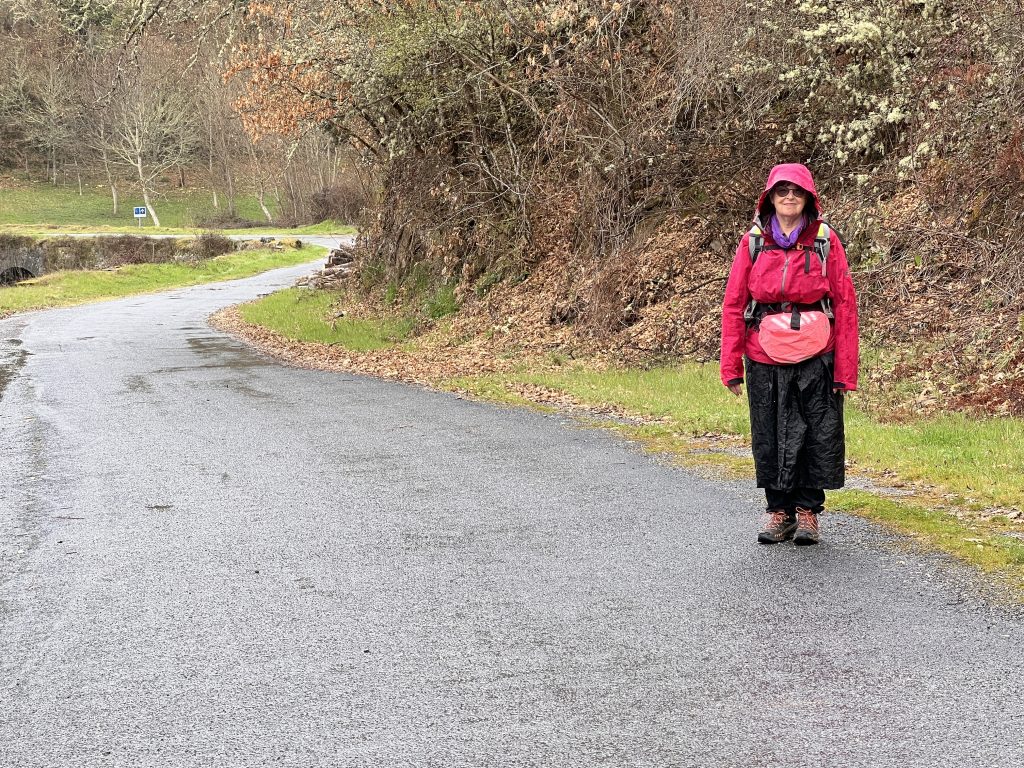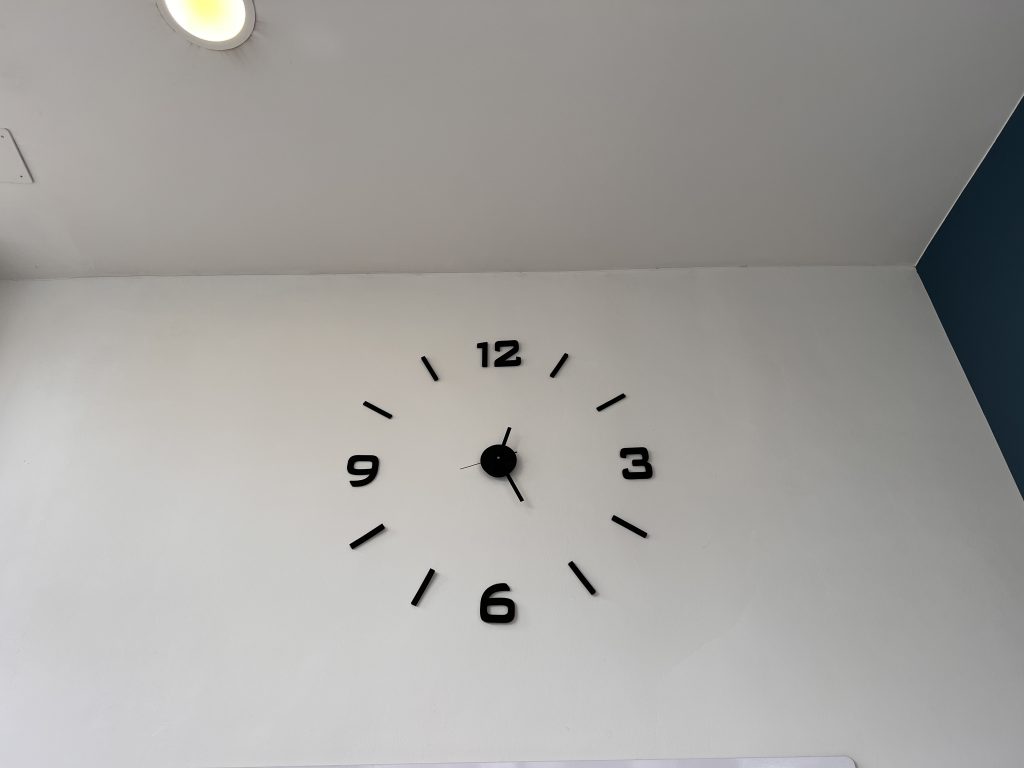
At the Laundromat

We're doing it again, from Sahagun to Santiago

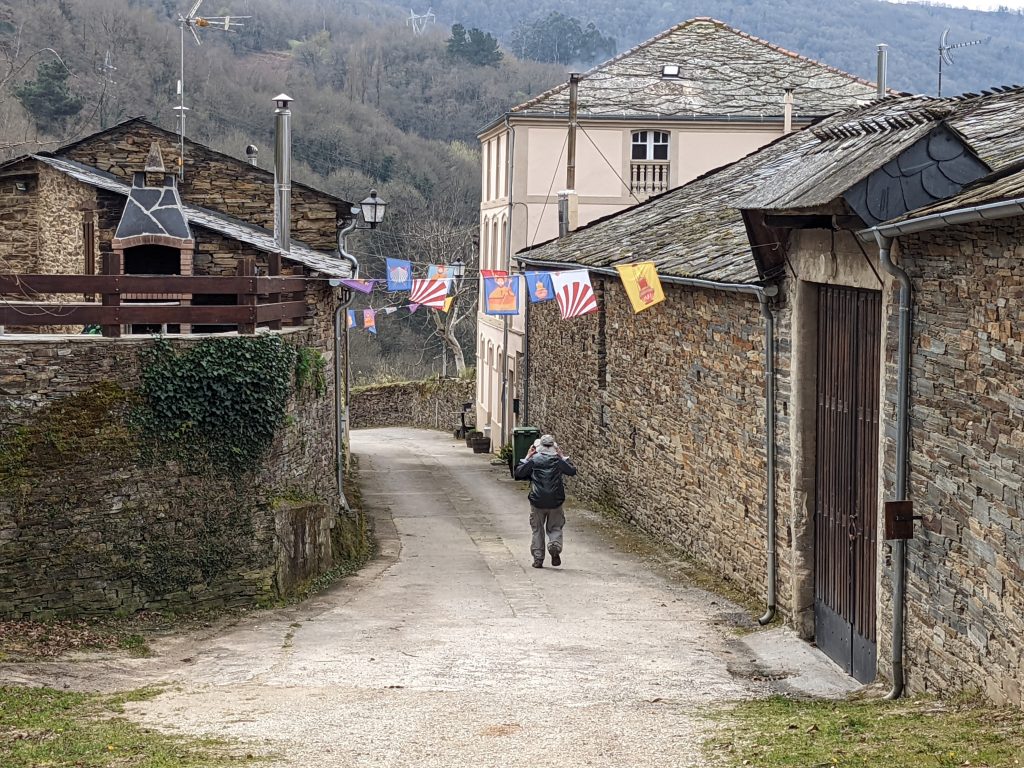
Back on March 14, we stayed in a lovely little hotel on the Plaza Mayor in Villafranca de Bierzo. The owners were so kind and friendly with us, like just about all the Spanish people we meet. The wife cheerfully told us “The Camino opens on March 15.” (In other words, the next day.) I’m not exactly sure what she meant, but we assumed she meant all the hotels, restaurants, bars, would be open ready to welcome pilgrims. And we certainly had started to see more pilgrims by then.
Unfortunately, either she was misguided or we misunderstood what she meant because we are still finding more places closed than open. We had hoped to stay in Vilei tomorrow night but the only place to stay there was closed (well the only place whose reviews did not mention bedbugs repeatedly). So, we decided to stay in Ferreiros. Again, closed. So we have decided to taxi a little further and stay in Portomarin tomorrow night. Luckily we did find a place to stay there, but the first place we called was… closed.
Also, on our walk yesterday, we walked the entire 6. 5 miles without a break because the one bar we came to was closed. Normally we could have probably sat down somewhere to rest our sore feet (still sore from the previous total downhill day) but it was a drizzly day and no dry place to sit. We need to start carrying plastic to sit on! Luckily yesterday was a delightful gorgeous walk through a lush valley along a river through the quaintest villages you’ve ever seen. So… those memories are probably what I’ll remember more than how much up and down there was and how much my feet hurt.
We took an alternate route from Triacastela, walking to Samos which has a famous monastery which dates to the 6th century. It’s quite large and was impressive. We had hoped to take a 4:30 tour of it but my feet had given out by then. If they’d had a later tour, I think I could have done it. Samos is a delightful town and we were so happy we had decided to stay there.
We are taking a break today. The walk from Samos to Sarria would have been 9 miles with no place to stop for food or coffee or rest and I have a very sore and tender big toe. It’s been hurting since the beginning of the trip, but the downhill the past two days just about did it in. We are hoping that it will recover a bit after a day of no walking. Sarria is a larger town than some (population 13,000). A good place to do our laundry at a self-service laundry and recharge our vodafone SIM cards.
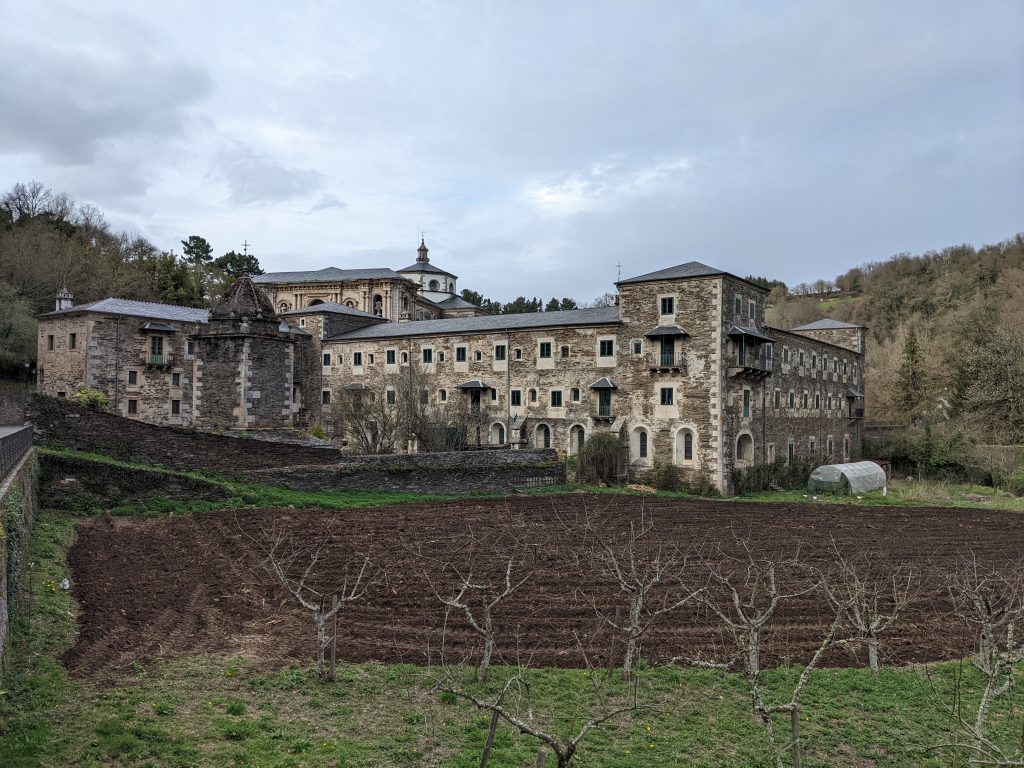
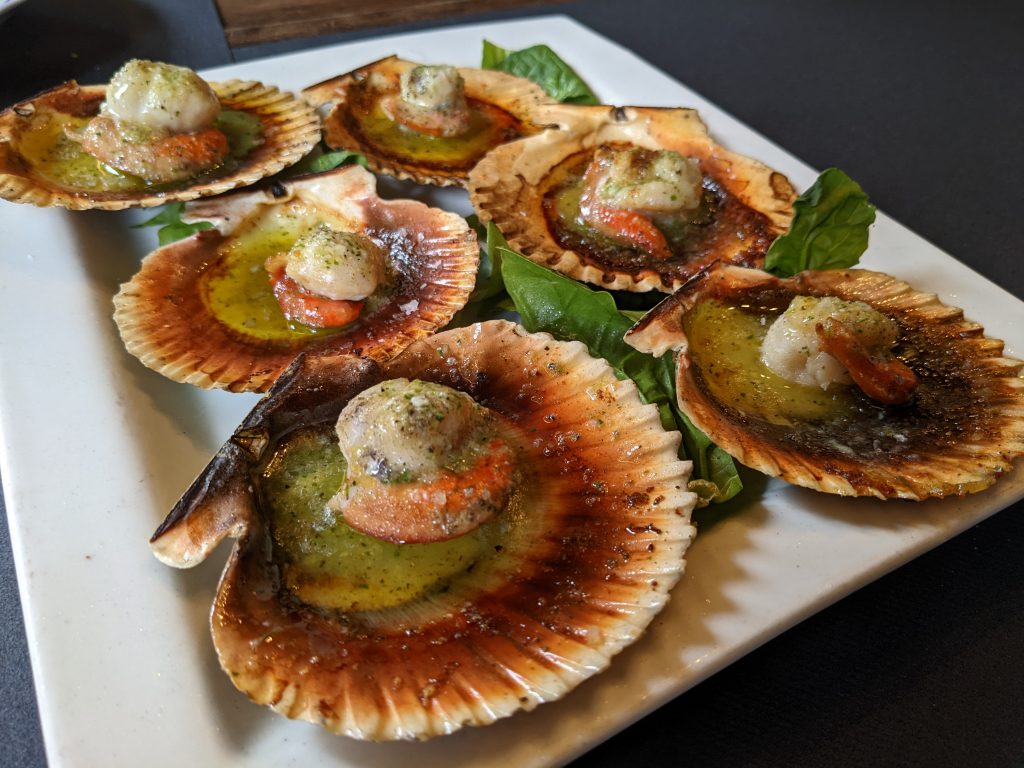
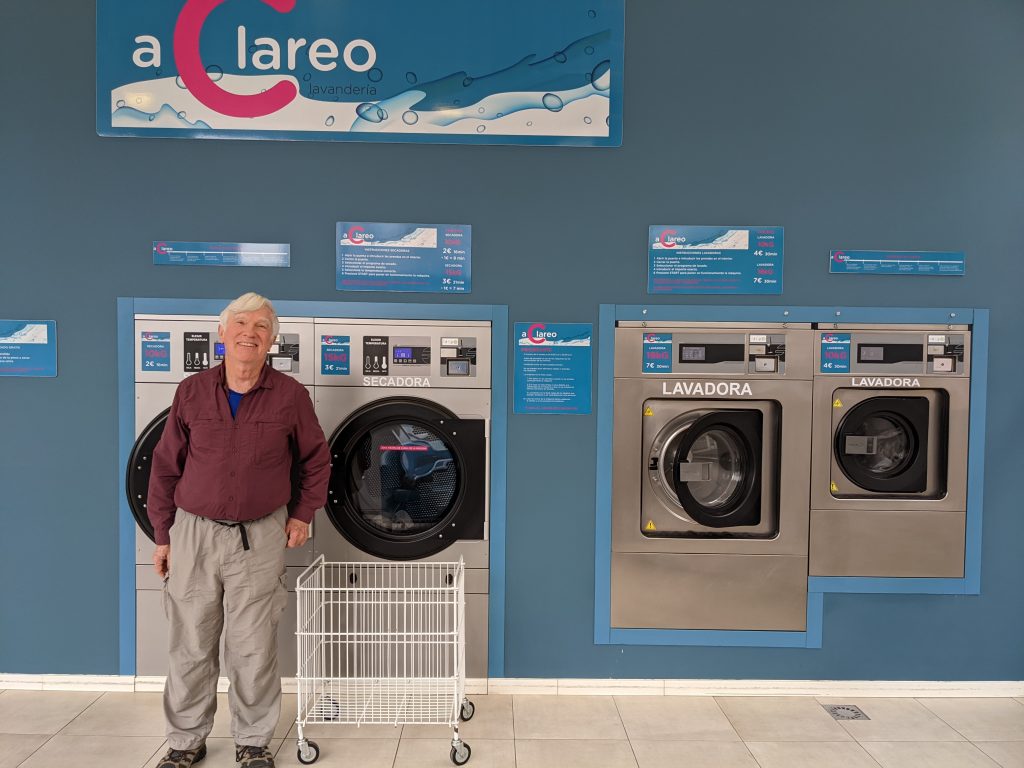
We walked 6.1 miles today, all downhill. As you probably know walking downhill is harder on your feet and knees so it was a pretty hard even though it was only six miles. We were both happy to get to Triacastela and get off our feet.
Whenever we woke up last night we could hear the wind roaring. The hotel guy said it was one of the most windy nights of the year. When we started out from Fonfria it was still windy and cold, below 40, but sunny. We both had our down coats and rain coats (which are great wind breakers) on. As we got lower and off the ridge the wind was not as bad and eventually it died down completely. We kept taking off layers and when we got to Triacastela we had only our shirts and they were too hot. It was almost 60.
We are staying at Complexo Xacobeo Albergue and Pension (aka Jacob’s Place) and are very happy with it.
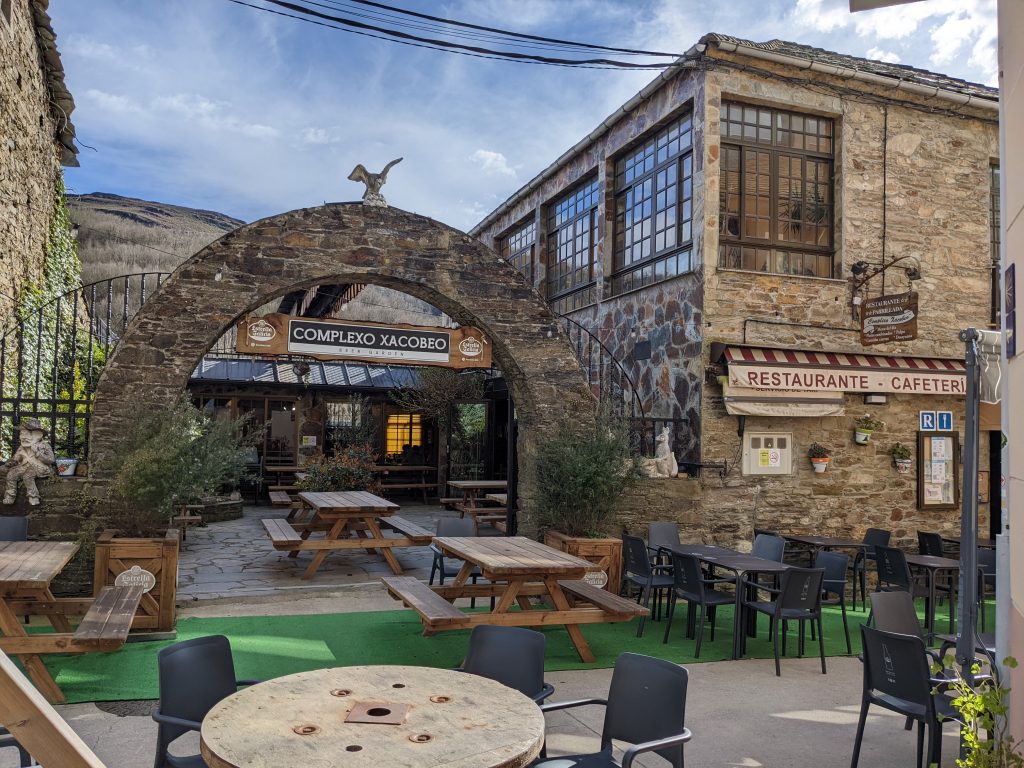
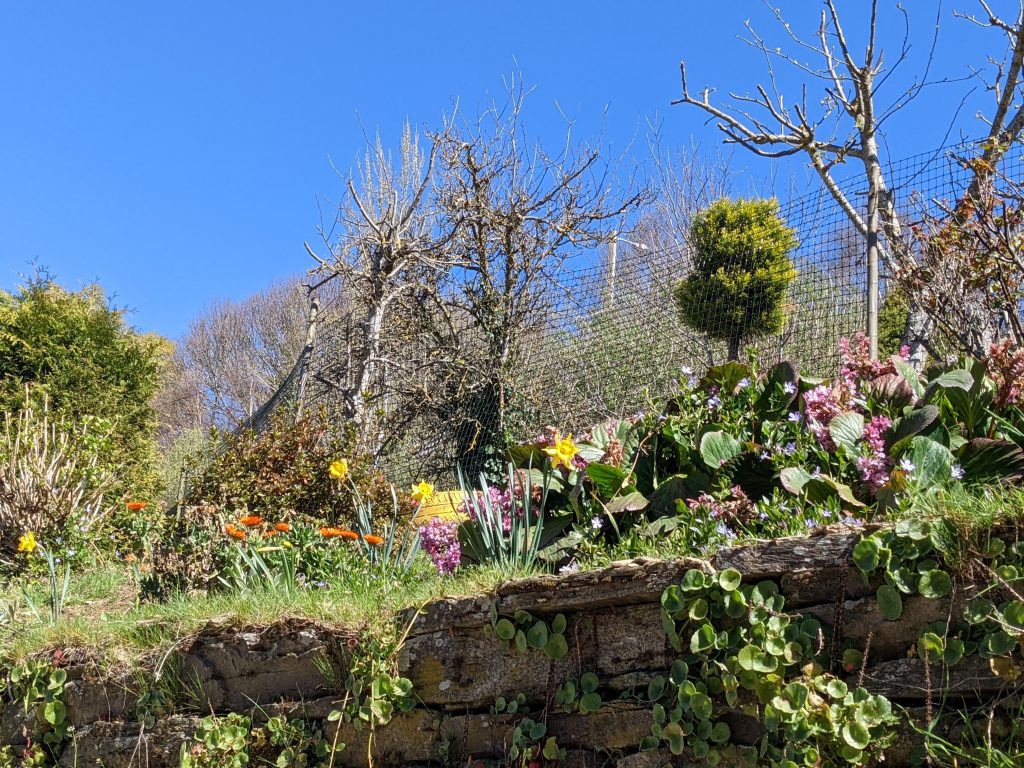
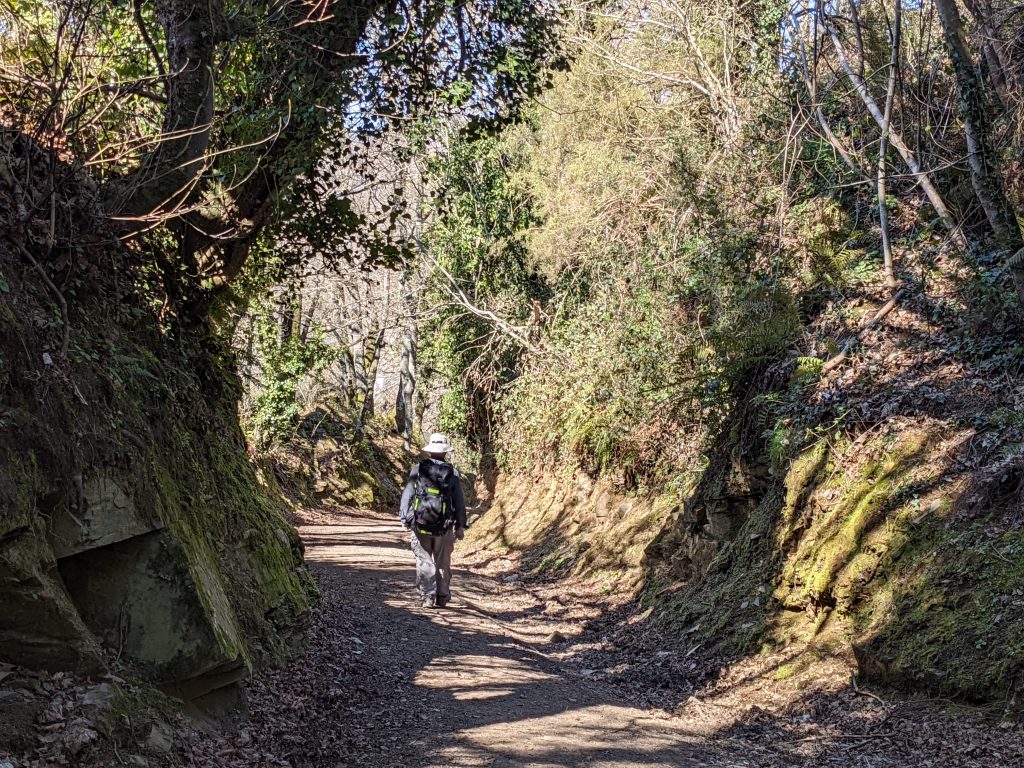
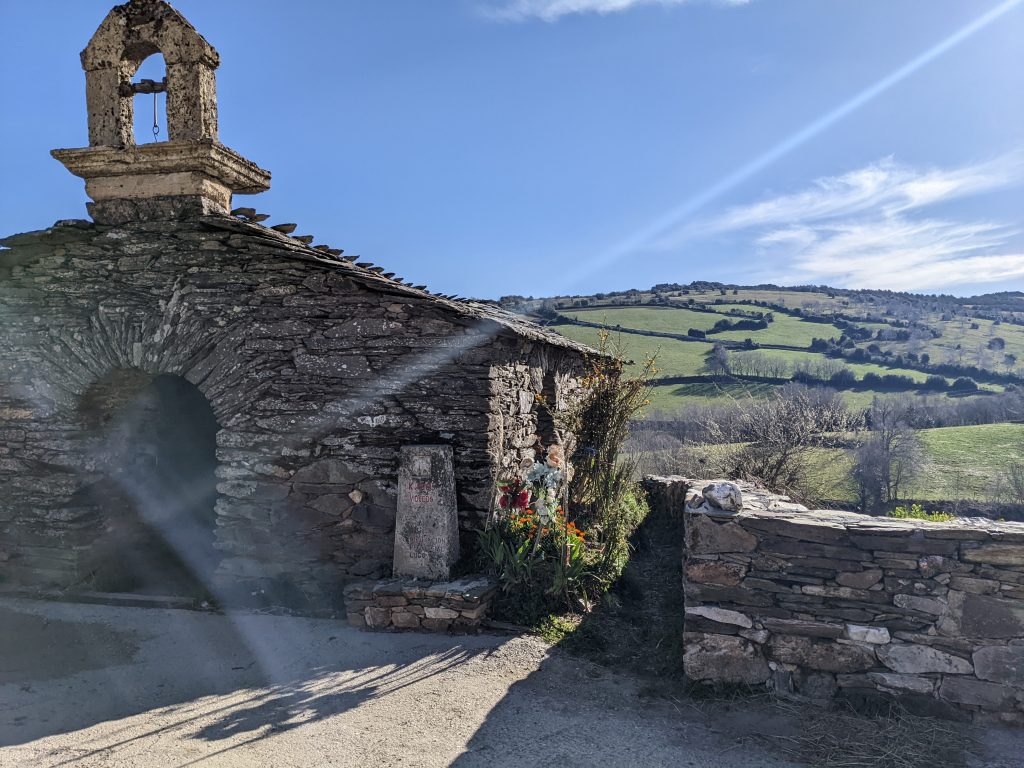
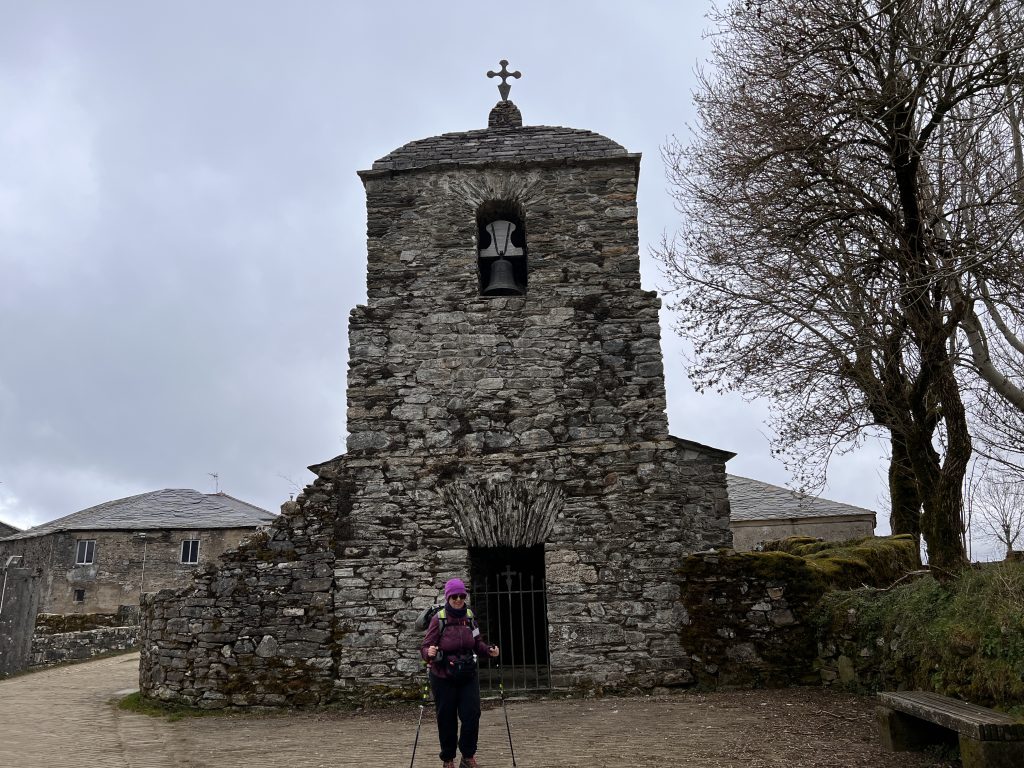
Well, the main thing you can say about today is that it was all downhill. Ha ha. It was a beautiful walk and beautiful weather after we got out of the early morning wind. But both of us were ready for it to be done. It was a constant downhill, sometimes quite steep. Both of us had sore sore feet at the end.
Charlie’s track showed we descended a little over 2000 feet. So not quite as bad as hiking down from Sandia Crest to the La Luz trailhead but there were fewer switchbacks! (Like none.)
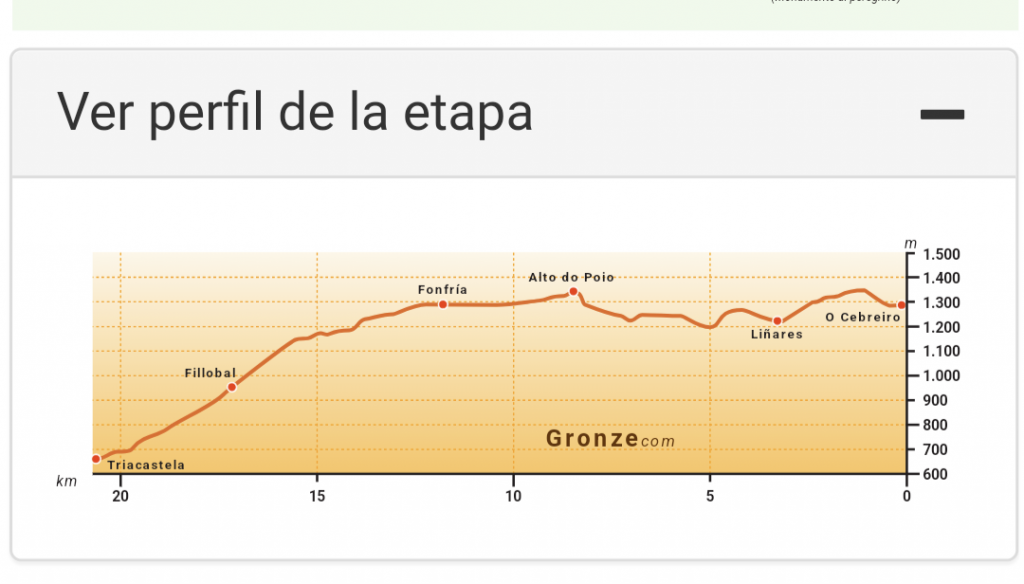
Our friend Henry asked in a comment yesterday: “Out of curiosity, how many hours do you actually walk? I imagine that the gung-ho younger walkers cover 5.8 miles in about 2 hours or a little more, though probably all they see are their feet. Do you make it a four hour stroll + coffee stops and a stop for lunch, or is your late lunch stop the end of your walking day?”
Well, Charlie keeps a track of each day’s walking using an app called Wikiloc. So, Henry, it’s easy to answer your question with those tracks. Here are stats for our last 3 days of walking.
Thursday, March 24: 6.1 miles, 4 hours and 48 minutes total, 2 hours and 29 minutes moving time.
Wednesday, March 23: 5.8 miles, 3 hours and 40 minutes total, 2 hours and 6 minutes moving time.
Tuesday, March 22: 7.1 miles, 4 hours and 20 minutes total, 2 hours and 37 minutes moving time.
We do stop at least once for breakfast and again for coffee if we find an open bar (doesn’t always happen). So, you can see, it’s pretty leisurely. We’ve been arriving to our day’s destination with plenty of time to check into our night’s lodging, rest a little, and then go out for lunch. Our favorite time for lunch is around 3 or 3:30 and then we are pretty much done with eating for the day. (Yesterday was an exception when we had a group dinner with two other pilgrims at the albergue.)
Those actual walking times are Charlie’s. Sometimes he gets a little ahead of me and waits for me to catch up and the app stops counting that moving time. So, my moving time is longer than Charlie’s.
Charlie is a stronger/faster walker than I am. When we were planning our first Camino, we both assumed he’d get way ahead of me and then we’d join up at some point. But it’s turned out that we stay together pretty much all the time because we like to walk together and see things together and talk about things. Charlie’s been very patient with me over the years.
Also, Charlie carries more than 2/3 of our weight so that slows him down a little and allows me to keep up better.
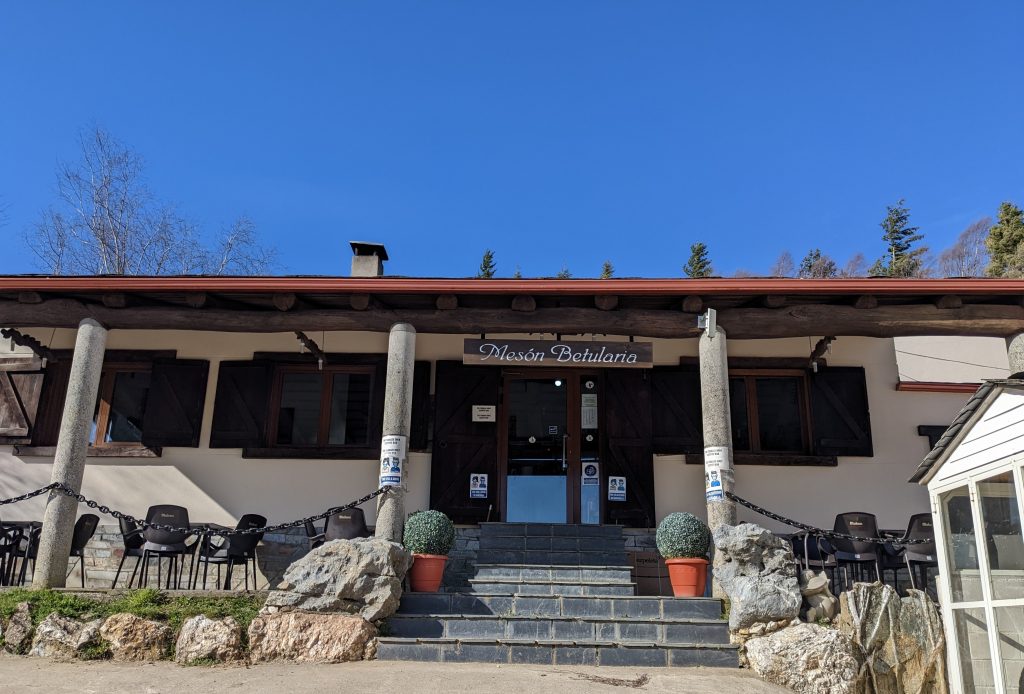
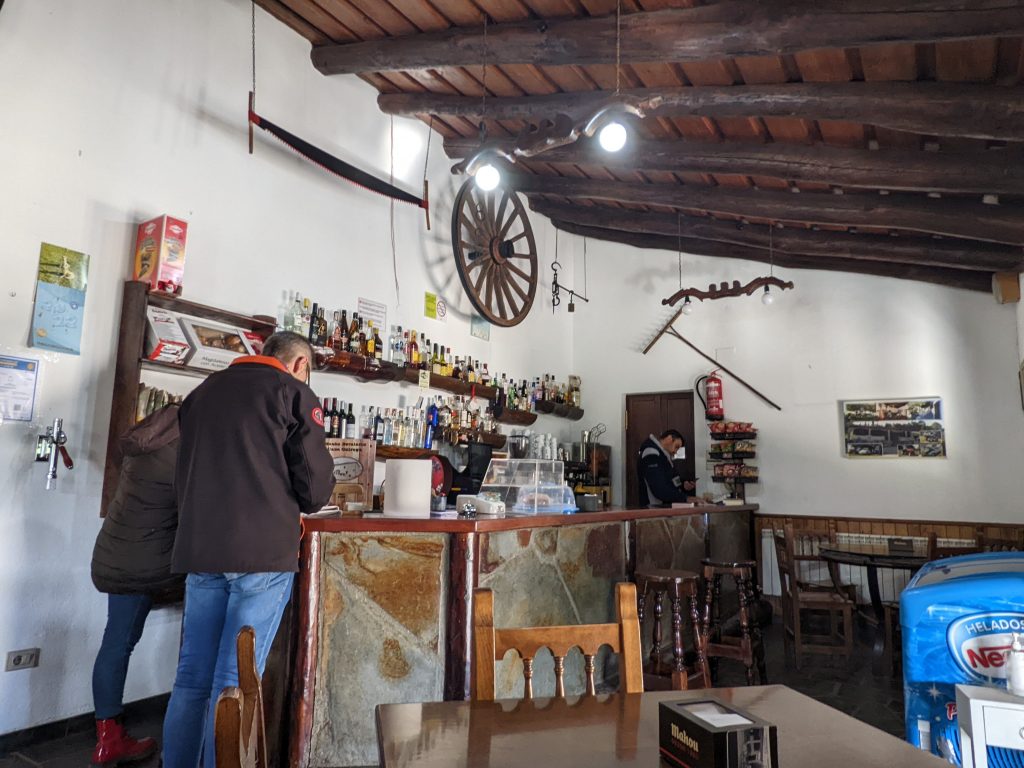
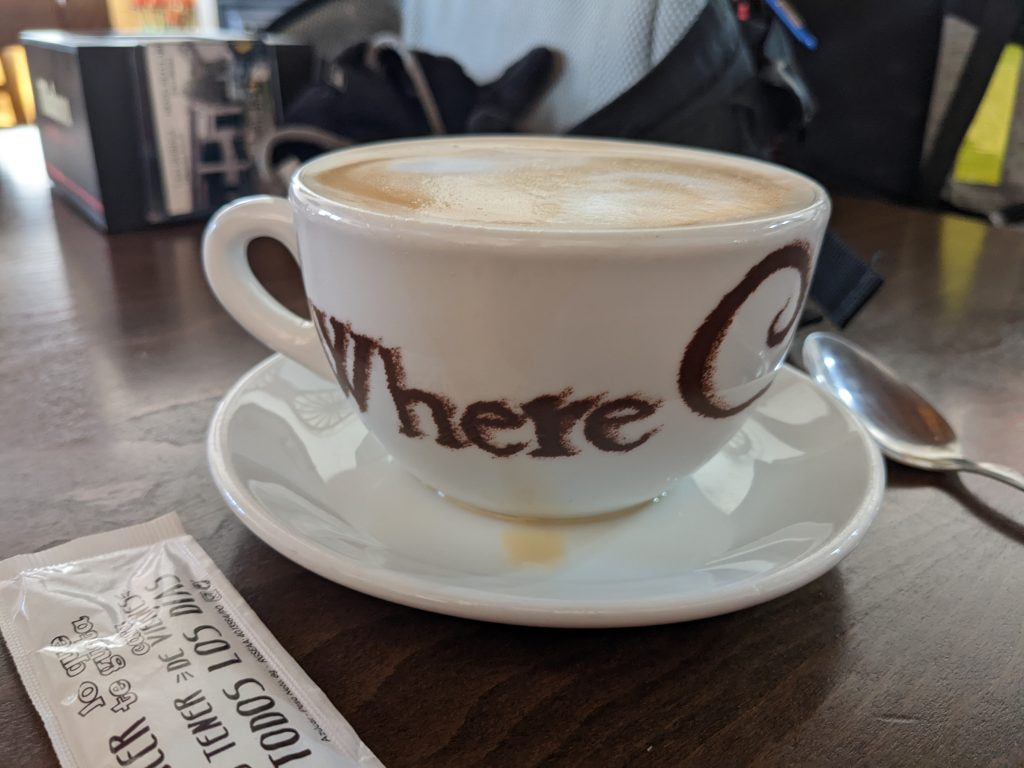
Each region handles the Camino differently. This is an example of the concrete posts that Galicia uses. You see one at any place where there is some question about which way to go and at least every half mile.
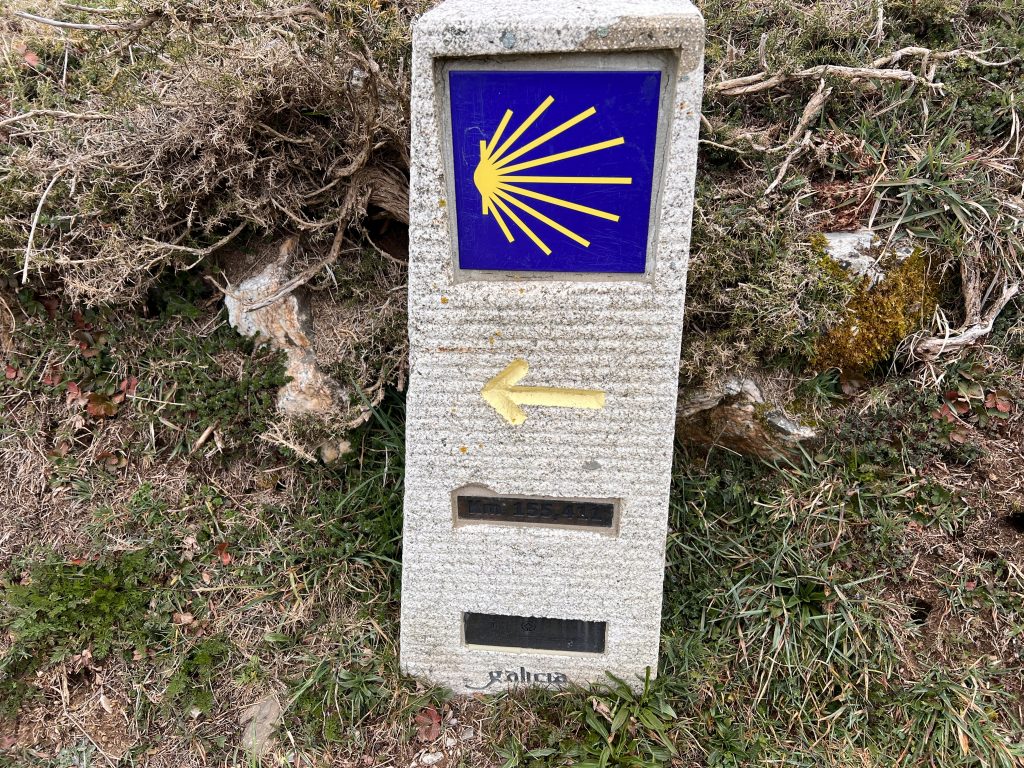
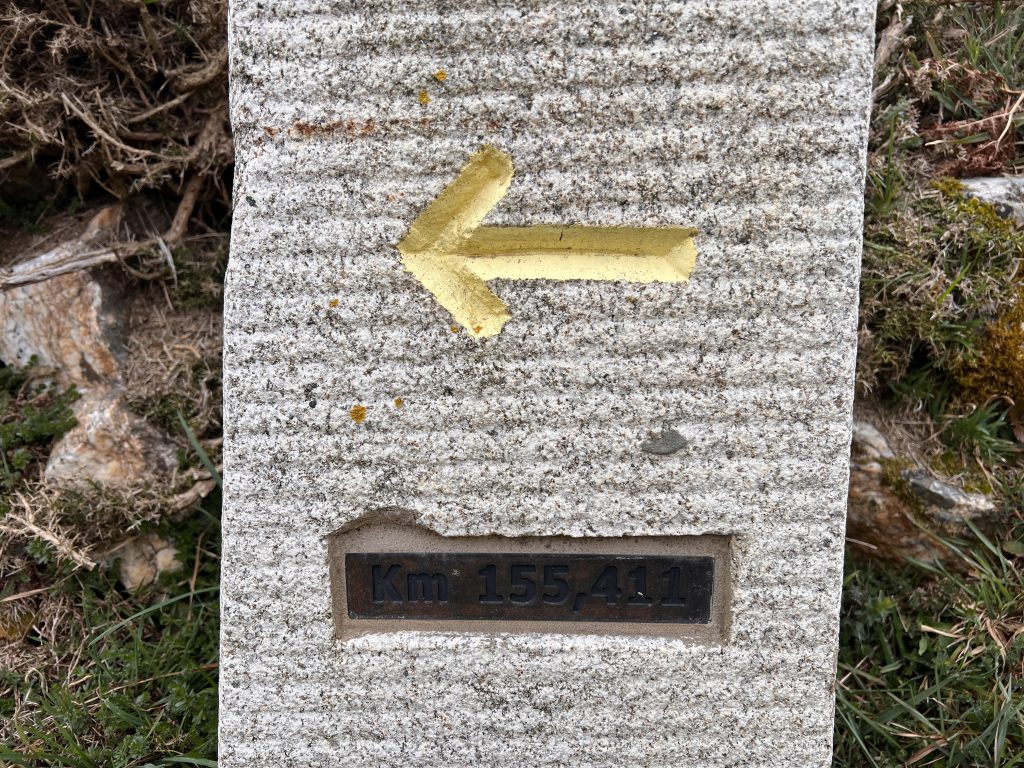
The distance is down to a yard. I have no reason to doubt it since civilian GPS has that accuracy but I wonder about the logistics of installing them. You would need to take the reading right by the post and it must go a foot or more down into the soil. The metal plaque is securely installed in the cement. This is necessary because people steal them for souvenirs. We walked the Portuguese Camino in 2017 and all the distance plaques in the last 100 km had been stolen. They were not as securely attached as these are, they must have changed their policy to prevent thefts.
I also wonder about the need for one yard accuracy to a city of 100,000 people that probably covers 3-4 square miles but what the heck, why not?
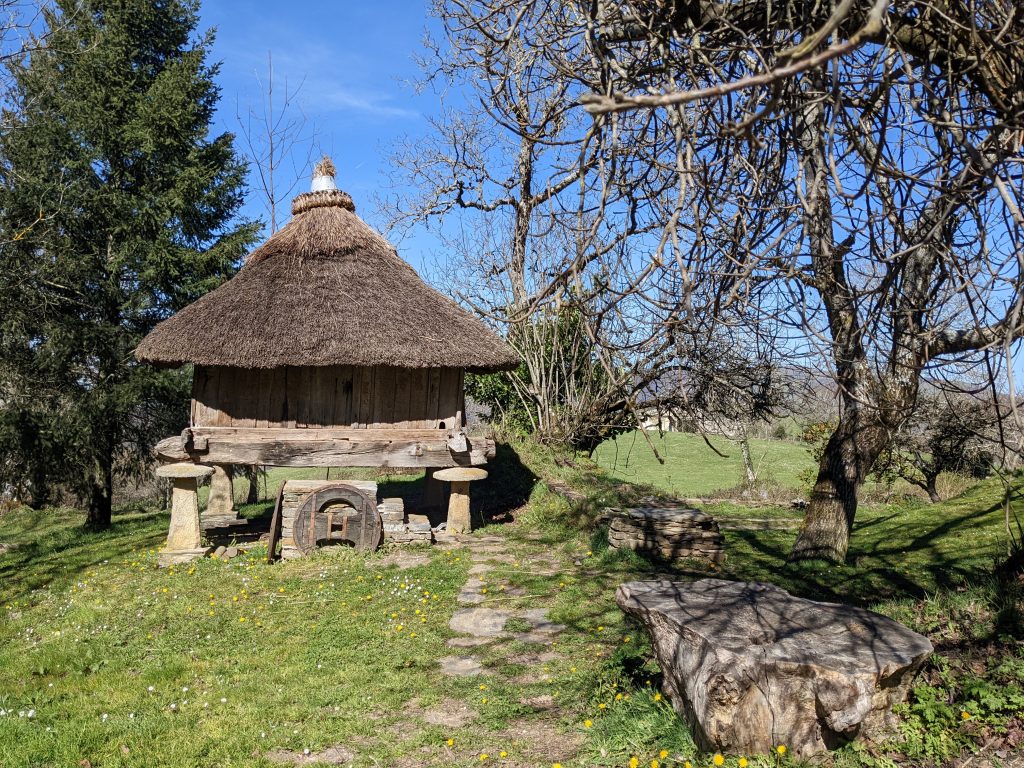
Galicia is also known for its hórreos. We have talked about these in other camino blogs. They are used for drying crops, such as corn, in rainy Galicia. They are build on stilts with little protrusions at the top of each leg to prevent mice, etc. from getting in and eating the corn. We love them and enjoy seeing them. Some are square like this one, some are rectangular, it depends on the local customs. It is unusual for one to have a thatched roof like this one. This one might have been decorative from the beginning and never really used.
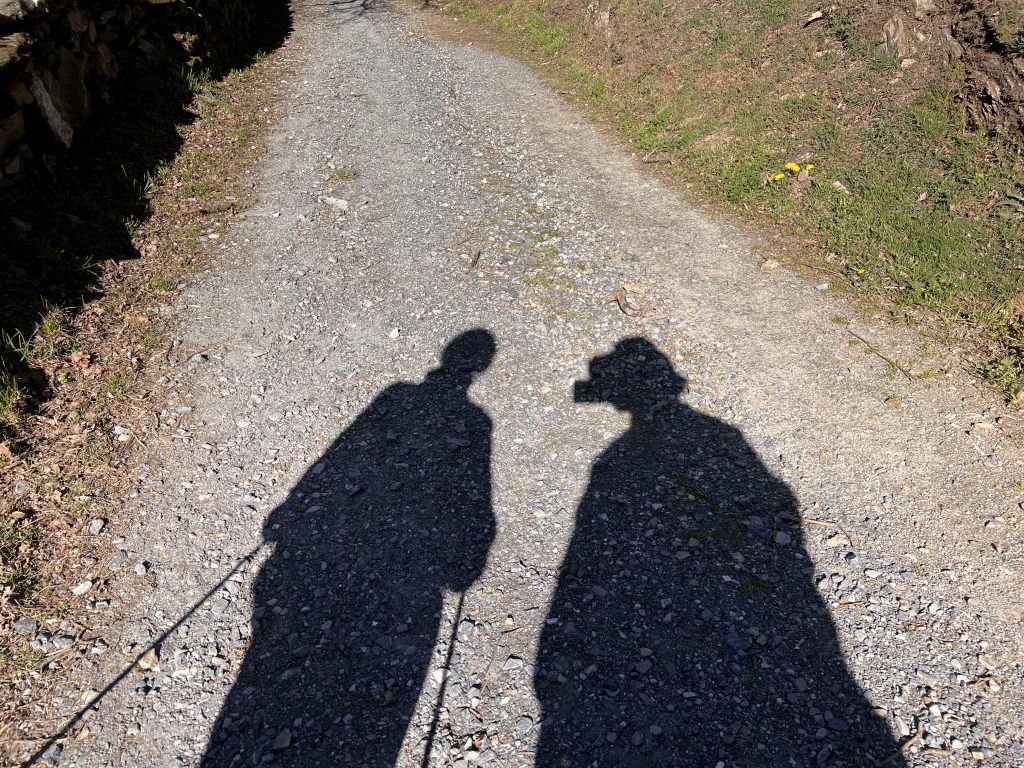
I love these, can’t stop, won’t stop.
